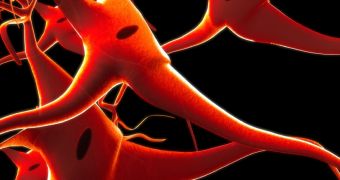A common concept says that neurons cannot divide.
But recent findings show that at least some of the brain regions can form new neurons and in "critical periods" the new neurons in adult brains display the same learning capacity as those in developing brains.
These discoveries could one day lead to therapies against neurodegenerative diseases like multiple sclerosis and Parkinson's. "Scientists first observed neurogenesis-the creation of new neurons in the adult brain-in animal brains in the 1960s but did not find evidence of it in humans until the late 1990s," said senior author Hongjun Song, an assistant professor of neurology at the Johns Hopkins University School of Medicine in Baltimore.
Songs' team checked if the new neurons differed from older ones, and if so to which degree and at what stage of development. The team detected new neurons in the hippocampus (a brain linked to learning and memory) and assessed their behavior by measuring their electrophysiological activity during various stages. "In young animals, cells are very active, very plastic, and they can change their properties readily. This whole process [also] happens in the environment of adult circuitry," said Song.
The researchers found a two-week critical period at about a month after these new neurons emerged; and during this particular period, they work like the neurons of a newborn baby. The activity of the new neurons was compared to the sequence that occurs in the mouse brain as the animal learns about a special spot (like a corner in its cage where it may receive food or a shock).
Meanwhile, the neuronal synapses are artificially activated turning stronger, a process known as long-term potentiation and involved in learning. "For the young cells, it's much easier to be potentiated, but, also, once they are potentiated, the amount of potentiation is much bigger than with brand-new cells. What this does is allow [these young cells] to fine-tune their connections" Song said. "From these data it seems that for high levels of plasticity what matters is the age of the single neuron and not the age of the brain in which the new neuron becomes incorporated," said Tommaso Pizzorusso, a neurobiologist at the Institute of Neuroscience of the National Research Council in Pisa, Italy. "Unfortunately, adult neurogenesis is limited to very specific structures of the brain and, therefore, the remainder of the brain is left with reduced levels of plasticity typical of 'old' cells."
Stem cell-based therapies could be employed in diseases like multiple sclerosis, Parkinson's and Alzheimer's where "mature neurons have died and all those fine connections are gone." "Such treatments could involve injecting young nerve cells, in the regions where they are not already continuously being produced, to upgrade flawed existing neural circuitry. Introducing young neurons can make the older circuitry more plastic and adapt to new conditions", Song said.

 14 DAY TRIAL //
14 DAY TRIAL //